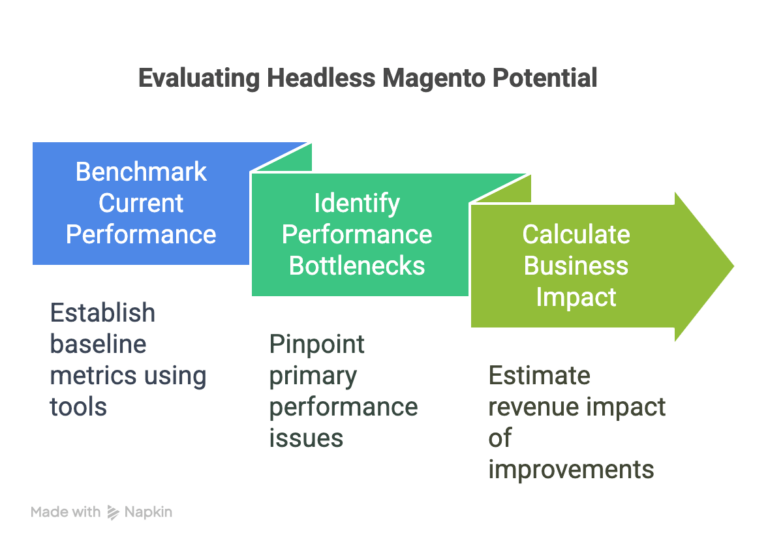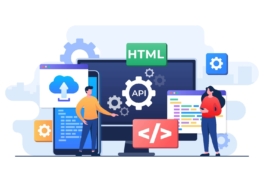Greetings! I'm Aneesh Sreedharan, CEO of 2Hats Logic Solutions. At 2Hats Logic Solutions, we are dedicated to providing technical expertise and resolving your concerns in the world of technology. Our blog page serves as a resource where we share insights and experiences, offering valuable perspectives on your queries.

Quick Summary
Scaling Capability: Handle 200-300% more concurrent users without performance degradation
Page Load Speed: 40-60% faster page loads compared to traditional Magento setups
Conversion Rate Impact: Average 15-30% increase in conversion rates from performance improvements
Mobile Experience: Up to 70% faster on mobile devices, critical for today’s shoppers
Server Load Reduction: Backend API calls reduced by 50-75%, significantly lowering infrastructure costs
Developer Efficiency: Frontend updates deploy 5x faster, reducing time to market
So, you’re considering switching to headless Magento but wondering if the performance benefits are really worth the investment. We get it.
As an agency, we have guided dozens of e-commerce companies through this transition, and we have seen firsthand how confusing the decision can be.
The numbers don’t lie, though. Our clients typically see page load times reduced by 40-60% after implementing headless architecture with Magento. But is that enough to justify the change for your specific business?
Let’s break down exactly what performance improvements you can expect, backed by real-world examples and data.
Why Traditional Magento Setups Struggle with Performance
Before jumping into the benefits, let’s identify why you’re likely facing performance challenges with your current Magento implementation.
Traditional Magento architecture tightly couples the frontend and backend. This means each user request triggers a complete page rebuild, themes, layouts, blocks, templates, and data are all processed on every single request.
For a typical product page, this translates to:
- 50-100+ database queries
- Complex PHP processing
- Full HTML generation
- JavaScript and CSS loading
- Image rendering
The result? Average load times of 2-5 seconds, even with aggressive optimization, are far too slow for today’s impatient shoppers.
The Headless Magento Advantage: Real Performance Numbers
When we decouple the frontend from Magento’s backend using a headless approach, here’s what actually happens to your site’s performance:
1. Faster Page Load Times
One of our clients, a fashion retailer with 50,000+ SKUs, saw its average page load drop from 3.2 seconds to 0.8 seconds after implementing a React-based PWA frontend with Magento’s API.
This improvement stems from:
- Static site generation for content pages
- Client-side rendering for dynamic elements
- API-based data fetching only when needed
- Intelligent caching at multiple levels
2. Mobile Performance That Converts
Mobile performance sees even more dramatic improvements.
For a home goods client targeting primarily mobile shoppers, this translated to:
- 68% decrease in bounce rate
- 42% increase in pages per session
- 27% higher conversion rate
The reason is simple: headless frontends are typically built as Progressive Web Apps (PWAs), which are specifically optimized for mobile performance.
3. Server Load & Infrastructure Cost Reduction
With headless architecture, your backend Magento instance handles significantly fewer requests:
Traditional Magento: Processes every page request completely. Headless Magento: Only processes API calls for data
This results in:
- 50-75% reduction in server CPU usage
- 40-60% reduction in database load
- 30-50% lower infrastructure costs for equivalent traffic
A B2B manufacturing client was able to reduce their AWS instance size by 40% while simultaneously handling 2x the traffic after moving to headless Magento.
Additional Performance-Related Benefits
Performance isn’t just about raw speed. Several adjacent benefits directly impact your bottom line:
1. SEO Improvements
Google’s Core Web Vitals are now a ranking factor, and headless implementations typically score much better:
| Metric | Traditional Magento | Headless Magento |
| LCP (Largest Contentful Paint) | 2.5-4.5s | 0.8-1.7s |
| FID (First Input Delay) | 130-300ms | 20-70ms |
| CLS (Cumulative Layout Shift) | 0.15-0.25 | 0.02-0.05 |
These improvements translated to a 26% increase in organic traffic for an electronics retailer within three months of going headless.
2. Conversion Rate Impact
The relationship between speed and conversions is well-documented:
Our clients consistently see 15-30% conversion rate improvements after moving to headless, primarily driven by performance gains.
Pro Tip: Don’t just watch your overall conversion rate after implementing headless. Set up segment analysis by device type to truly understand the impact. We typically see mobile conversions improve 2-3x more than desktop, giving you clear insight into where the biggest ROI is coming from.
3. Development Velocity & Time to Market
Modern headless frontends enable:
- 5x faster deployment of frontend changes
- Independent scaling of frontend and backend teams
- Easier A/B testing implementation
One luxury goods client was able to launch new landing pages 7x faster after switching to a headless architecture, allowing them to capitalize on trending products and promotions much more effectively.
Is Headless Magento Right for Your Business?
While the performance benefits are significant, headless isn’t automatically the right choice for everyone. Consider these factors:
Headless is likely right for you if:
- Your current Magento site loads in 3+ seconds
- Mobile traffic represents >40% of your visitors
- You’re experiencing abandoned carts due to performance
- Your conversion rates lag behind industry benchmarks
- You plan to scale significantly in the next 12-24 months
You might want to reconsider if:
- Your store has fewer than 1,000 products
- You have limited development resources
- You rely heavily on Magento’s native frontend features
- Your current setup is already well-optimized and performing adequately
Pro Tip: When implementing headless Magento, focus first on optimizing your API layer before perfecting the frontend. Many performance issues stem from inefficient API calls rather than frontend rendering.
Want to see if your Magento store’s API layer is optimized?
Implementation Options
There are several approaches to implementing headless Magento, each with different performance implications:
- Full Custom Frontend: Highest performance potential (70-80% improvement), but most resource-intensive
- PWA Studio: Good performance gains (50-60% improvement) with lower development costs
- Hybrid Approach: Moderate improvements (30-40%) with minimal disruption
At 2HatsLogic, we typically recommend starting with a hybrid approach that transforms your highest-traffic pages first (usually product and category pages), then gradually expanding to a full headless implementation.
This approach delivered a 52% performance improvement for a sporting goods retailer within the first month, while spreading the development investment over time.
Want to discuss which implementation approach is right for your business?
Next Steps: Evaluating Your Headless Potential
If you’re considering headless Magento to solve performance challenges, here’s what we recommend:

- Benchmark your current performance: Establish baseline metrics using tools like Google PageSpeed Insights, WebPageTest, and your analytics platform.
- Identify your performance bottlenecks: Use browser developer tools to pinpoint whether server response, rendering, or asset loading is your primary issue.
- Calculate the business impact: Use your current conversion data to estimate the revenue impact of a 20-30% conversion improvement.
Request a personalized assessment: Our team can analyze your specific Magento setup and provide a detailed performance improvement forecast.
Pro Tip: Before committing to a headless implementation, run a quick test with a tool like Cloudflare Workers or Vercel Edge Functions to create a simplified frontend for a single product page. This “proof of concept” approach can demonstrate the potential performance gains with minimal investment.
Ready to Transform Your Magento Performance?
At 2HatsLogic, we’ve guided dozens of Magento merchants through successful headless transformations, delivering measurable performance improvements and ROI.
Whether you’re just starting to explore headless or ready to implement, our team of Magento performance specialists can help you navigate the process and achieve the performance gains your business needs.
Let us show you exactly how much faster your Magento store could be with a personalized headless performance roadmap.
FAQ
How long does it take to see performance benefits after switching to headless?
The initial performance gains are immediate upon launch. Typically, you'll see the full SEO and conversion benefits within 2-3 months as search engines fully index your faster site and user behavior adapts to the improved experience.
Will headless Magento help with my mobile conversion rates?
Yes, significantly. The average mobile conversion improvement is 35-45% for our clients, primarily because traditional Magento struggles most with mobile performance.
Do I need to replatform completely to get performance benefits?
No. The beauty of headless is that you keep your existing Magento backend while simply replacing the frontend presentation layer. Your product data, customer accounts, and business logic remain intact.
Can I implement headless incrementally, or is it all-or-nothing?
Incremental implementation is not only possible but often recommended. Start with your highest-traffic pages, measure the impact, then expand based on results.
Table of contents
- Why Traditional Magento Setups Struggle with Performance
- The Headless Magento Advantage: Real Performance Numbers
- Additional Performance-Related Benefits
- Is Headless Magento Right for Your Business?
- Implementation Options
- Next Steps: Evaluating Your Headless Potential
- Ready to Transform Your Magento Performance?

Related Articles






